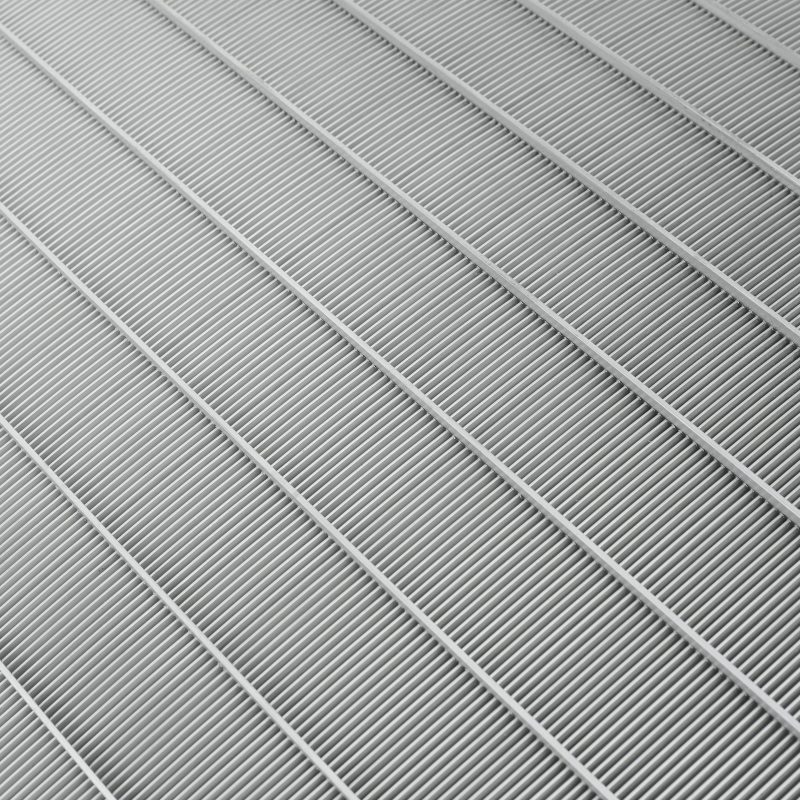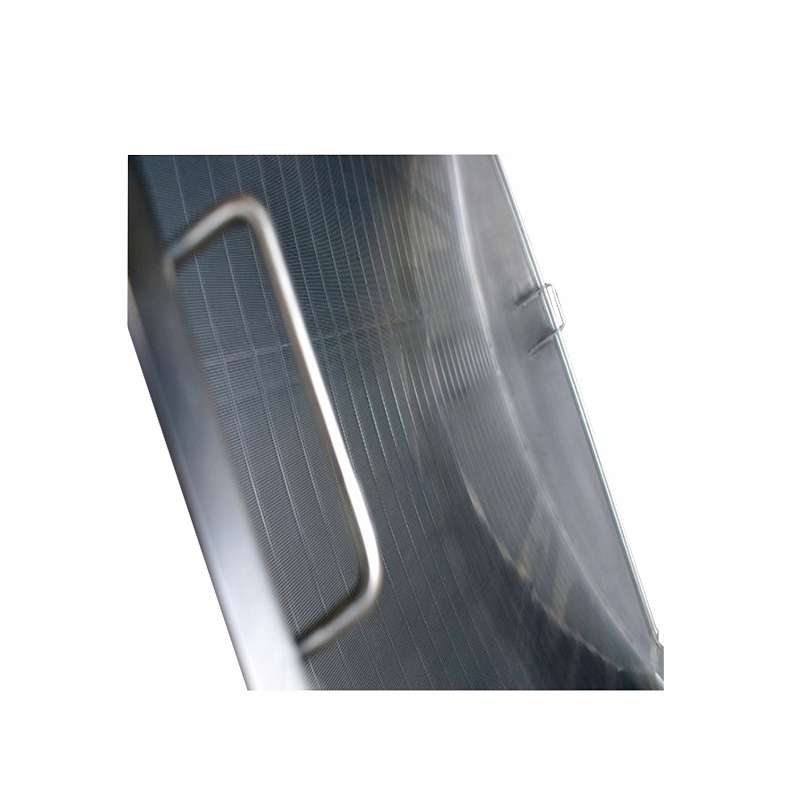Tel: +86 311 8595 5658 E-mail: admin@yuanlvfilter.com
In countless industrial processes – from brewing and food production to chemical processing, mining, and wastewater treatment – the efficient separation of solids from liquids is crucial. Unwanted solids like sand, plastics, bark, glass, or spent grains can wreak havoc on downstream equipment, clog pipes, compromise final product quality, and lead to costly downtime.
YUANLV specializes in providing robust solutions to these challenges. Our Wedge Wire Cross-Flow Sieve Panels, including both sieve bends and flat screens, are engineered to deliver exceptional dewatering performance, protecting your processes and boosting your bottom line.

Wedge wire Cross-Flow Sieve Panels utilize precisely shaped V-shaped wires welded to support rods, creating slots that widen inwardly. In a cross-flow configuration, the feed slurry flows across the screen surface, perpendicular to the wire direction.
This design leverages a fascinating fluid dynamic principle:
The Coanda Effect: As the liquid flows over the wedge wires, it tends to adhere to the surface and is effectively "pulled" through the slots. This enhances the dewatering rate significantly compared to simple gravitational drainage, while the sharp leading edge of the wires efficiently shears oversized solids away, keeping them on the screen surface.
Achieving optimal performance with a wedge wire cross-flow sieve isn't just about the screen itself; it's about understanding the interplay of design and operational parameters:
Screen Width: Directly impacts the total flow area. Wider screens can handle higher volumetric flow rates, making it a primary factor in determining dewatering capacity.
Slot Opening: This critical dimension dictates the particle size separation point. Smaller slots remove finer solids but may have lower capacity, while larger slots increase capacity but allow smaller particles through. Careful selection based on the application is key.
Wire Size (Width): Influences the screen's open area and structural integrity. While smaller wires increase the open area percentage (potentially boosting capacity), larger wires offer greater strength and wear resistance, especially for abrasive materials.
Installation Angle (Sieve Bends): The angle at which a sieve bend is installed affects the slurry's residence time and the gravitational force component acting on the solids. Optimizing this angle is crucial for balancing dewatering efficiency and solids conveyance.
Feed Velocity: The speed at which the slurry hits the screen impacts separation dynamics. Too high, and fine solids might be forced through; too low, and capacity suffers. Controlled velocity promotes efficient separation.
Uniform Feed Distribution: Ensuring the slurry spreads evenly across the entire screen width is vital. Concentrated flow paths lead to localized wear and inefficient use of the available screen area, reducing overall capacity and efficiency.
Maximizing Efficiency: The Role of Screen Length and Wire Orientation
While capacity is often linked to width, screening efficiency and the ability to handle high solids loading are directly related to the screen length. Longer screens provide more opportunity for water to drain and for solids to be effectively captured and transported off the screen. This is particularly important when dealing with feeds containing a high percentage of solids.
Furthermore, for flat cross-flow dewatering screens, performance can be significantly enhanced by tilting the wedge wires relative to the support structure. This engineered tilt increases the effective drainage area presented to the oncoming flow, boosting dewatering capacity without necessarily increasing the screen's overall footprint.

Coal, Minerals, Aggregate, Sand & Gravel
Food & Beverage (e.g., brewing, processing)
Chemical Processing
Wastewater Treatment
And many others handling abrasive or challenging solids.
Static Operation: No moving parts mean minimal maintenance, reduced energy consumption, and lower operating costs compared to dynamic screens like curved sieves.
Optimized Pre-Screening: Often placed upstream of vibrating screens, they perform an efficient initial cut, removing excess liquid and presenting a more consistent, laminar flow feed to the downstream equipment, improving its efficiency and lifespan.
Enhanced Wear Life: Robust construction with high-specification materials ensures durability, especially in applications with abrasive flows.
Higher Capacity: Engineered designs often outperform conventional static sieve units of similar size.
Versatile Solutions: Available in standardized panel sizes for easy replacement and integration, YUANLV also offers custom engineering to retrofit specific applications and meet unique process requirements.
Maximum Uptime: Durable components and smart design minimize downtime and ensure reliable, continuous operation.
Choosing the right dewatering screen involves more than just selecting a product; it requires understanding the nuances of your specific application. At YUANLV, we combine high-quality manufacturing with application expertise to deliver wedge wire cross-flow sieve panels that effectively remove troublesome solids, protect your equipment, and optimize your process efficiency.
Ready to improve your solids separation and dewatering performance?
Contact YUANLV today to discuss your application and dewatering solutions.